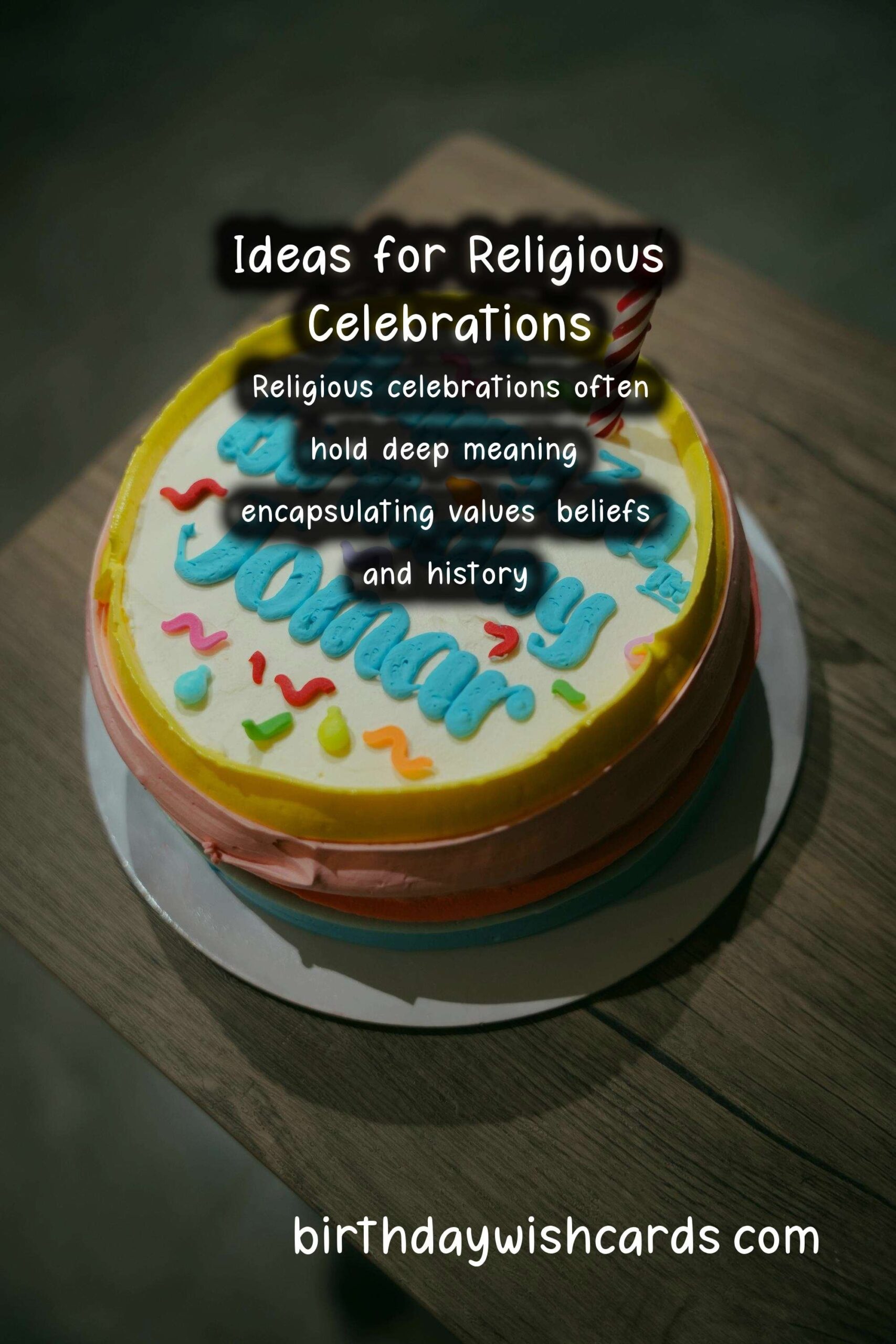
When it comes to religious celebrations, the joy of coming together with family and friends to honor traditions is unparalleled. However, crafting ideas that truly shine requires creativity, thoughtfulness, and attention to detail. In this article, we will explore various religious celebration ideas that cater to diverse beliefs while ensuring a captivating experience for everyone involved.
Understanding the Essence of Religious Celebrations
Religious celebrations often hold deep meaning, encapsulating values, beliefs, and history. They provide an opportunity for community bonding, reflection, and spiritual enrichment. Understanding the essence of the celebration is essential in order to tailor unique and memorable ideas that resonate with participants.
1. Exploring Themes for Celebration
Choosing a theme is one of the first steps in creating a memorable religious celebration. Here are some ideas to get you started:
Faith & Community
Emphasize the importance of community by organizing activities that bring people together. This could include group prayers, shared meals, or community service projects.
Nature & Spirituality
Incorporate elements of nature using decorations that reflect the surroundings. Creating a serene outdoor atmosphere can enhance the spiritual experience.
Heritage & Tradition
Celebrate traditional customs unique to each religion. This could involve traditional attire, foods, and ceremonies that pay homage to cultural backgrounds.
2. Crafting Unique Celebration Ideas
Once you have a theme, it’s time to brainstorm unique ideas for the celebration. Here are a few inspiring suggestions:
Interactive Prayer Stations
Set up various stations where participants can engage in different forms of prayer or reflection. Each station can represent a different aspect of faith.
Cultural Sharing Potluck
A potluck where guests bring dishes from their cultural background encourages sharing and welcomes diversity. Encourage storytelling around each dish.
Faith-Based Workshops
Organize workshops related to the faith, such as art, music, or cooking classes that highlight religious significance.
3. Engaging Activities for All Ages
It’s essential to ensure that activities cater to all age groups. Here are some engaging ideas:
Children’s Craft Corner
Create a designated space for kids to engage in fun crafts that are related to the celebration. This could include coloring books, making decorations, or creating religious symbols.
Teens & Young Adults Panels
Host panels for teens and young adults where they can discuss their beliefs and experiences. This fosters connection and understanding between generations.
Family-oriented Activities
Incorporate games and team-building activities that encourage family participation. A scavenger hunt with clues related to religious teachings can be both fun and educational.
4. Creating a Welcoming Atmosphere
Setting the right tone for the celebration is vital. Here’s how to create an inviting environment:
Thoughtful Decorations
Use decorations that align with the religious theme. This could include meaningful quotes, symbols, and nature-inspired elements.
Inviting Music and Readings
Music is a powerful aspect of religious celebrations. Incorporate hymns or spiritual songs that resonate with participants.
Lighting and Ambiance
Pay attention to lighting. Soft, warm lighting can create a calm and reflective mood, while brighter setups can foster energy and joy.
5. Incorporating Technology
In today’s digital age, technology can enhance religious celebrations:
Live Streaming and Virtual Participation
Ensure that those unable to attend in person can participate through live-streaming services. This fosters inclusivity.
Social Media Integration
Encourage attendees to share their experiences on social media using a specific hashtag. Engaging with a broader online community builds excitement.
Interactive Apps
Consider creating an event app that helps participants navigate the day’s activities, access schedules, and share information easily.
6. Traditional vs. Modern Approaches
Finding a balance between tradition and modernity is crucial for appealing to a wide audience:
Respecting Traditions
Ensure that traditional elements are honored, allowing older generations to connect with their heritage.
Innovative Practices
At the same time, introducing new practices can engage younger generations and make them feel included.
7. Emphasizing Community Service
Religious celebrations are an excellent opportunity to give back:
Fundraising Events
Organize fundraising activities where proceeds go to a charitable cause aligned with the faith’s values.
Service Projects
Plan service projects as a part of the celebration, allowing attendees to work together and make a difference.
8. Creating Lasting Memories
Finally, ensuring that participants have tangible memories of the event is important:
Photo Booths
Set up a themed photo booth where guests can take pictures together, capturing joyful moments.
Memory Jars
Encourage attendees to write messages or memories related to the celebration and place them in a jar to be shared later.
Conclusion
Crafting memorable religious celebrations involves blending creativity, tradition, and community spirit. By incorporating these ideas, you can create an event that shines, enriches faith, and deepens connections among attendees. Remember, the goal is to celebrate, reflect, and foster a sense of belonging for everyone involved.
Religious celebrations often hold deep meaning, encapsulating values, beliefs, and history. When it comes to religious celebrations, the joy of coming together with family and friends to honor traditions is unparalleled.
#ReligiousCelebration #Faith #Community #Tradition #Culture

